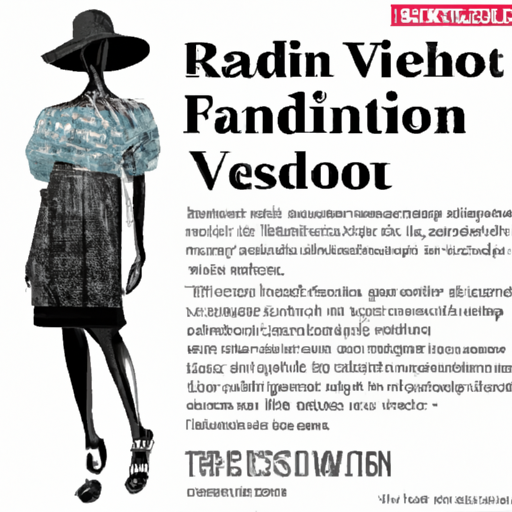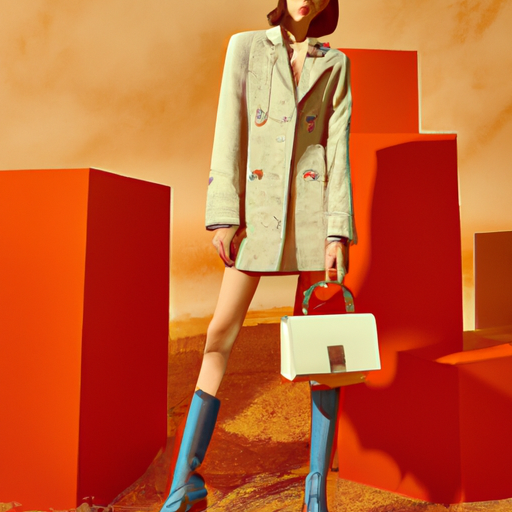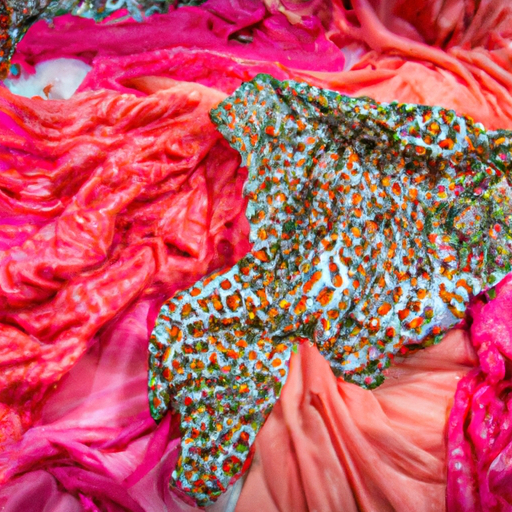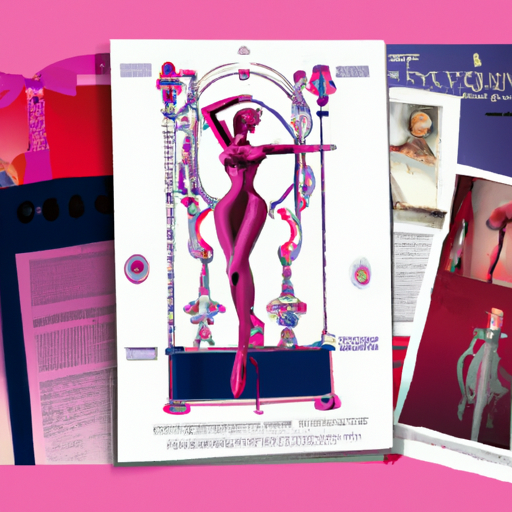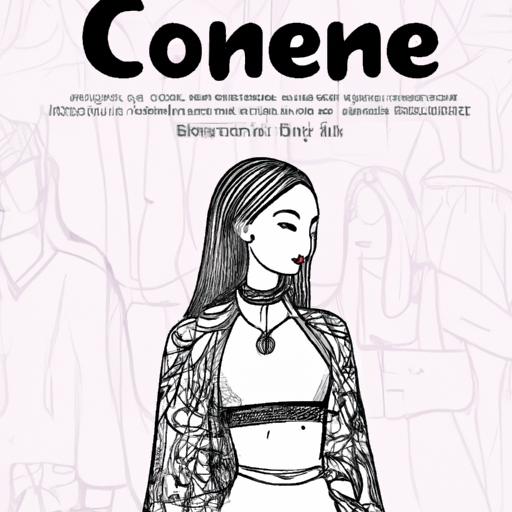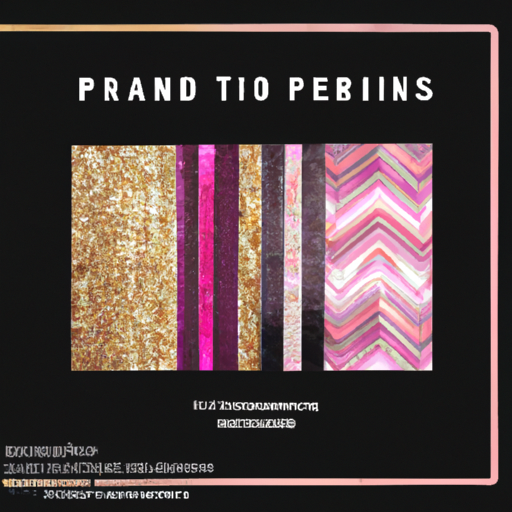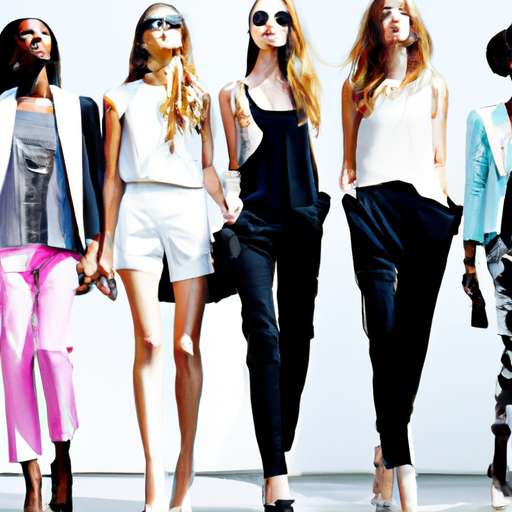How To Predict Fashion Trends?
You’re always on the lookout for the latest fashion trends, wondering how some people seem to effortlessly stay ahead of the curve. Well, it’s time to uncover the secrets behind predicting those fashion fads that will soon take the world by storm. From analyzing runway shows to keeping an eye on street style, this article will reveal the key techniques that will help you become a fashion trendsetter in no time. Get ready to make heads turn with your impeccable style!
Table of Contents
Understanding the Fashion Industry
The Influence of Designers and Brands
In the world of fashion, designers and brands hold a significant influence over the trends that shape the industry. Whether it’s a renowned fashion house like Chanel or an up-and-coming designer, their collections often set the tone for what will be seen on the runways and in stores. Designers bring their unique visions to life through their creations, showcasing innovative styles, fabrics, and silhouettes. Brands, on the other hand, have the power to widely distribute these designs and promote them to consumers. The collaboration between designers and brands is critical in determining what will become popular and what will fade into obscurity.
The Role of Fashion Shows and Runways
Fashion shows and runways are key platforms for showcasing new trends and collections to industry insiders and the general public. They provide designers with an opportunity to present their creations in a carefully curated and visually captivating manner. Fashion shows are not only influential in setting trends but also in creating buzz and generating excitement around upcoming collections. Runway models, adorned in designer pieces, walk down the catwalk, demonstrating how these garments can be styled and worn. The energy and creativity of fashion shows often leave a lasting impression on attendees, setting the tone for the next season’s trends.
The Impact of Street Style and Influencers
Street fashion and influencers play a crucial role in influencing and predicting fashion trends. Street style has become a significant source of inspiration, where individuals showcase their personal style and how they interpret the latest trends. Fashion photographers capture these looks during major events like Fashion Weeks, providing a window into what people are wearing and how they are styling it. Online platforms and social media have amplified the impact of street style, allowing individuals to share their looks with a global audience. Influencers, who have a substantial following and audience engagement, further amplify trends by showcasing how to incorporate them into everyday wardrobes. Their influence often extends to collaboration with brands, creating exclusive collections that reflect their personal style and resonate with their followers.
Market Research and Analysis
Identifying Consumer Needs and Preferences
Market research is a vital component of predicting fashion trends, as it helps to identify consumer needs and preferences. By conducting surveys, focus groups, and analyzing customer feedback, fashion brands can gain insights into what their target audience desires. Understanding consumer preferences allows designers and brands to create collections that resonate with their customers, increasing the likelihood of commercial success. Market research helps to identify the colors, styles, and fabrics that are in demand, allowing brands to design products that align with consumer expectations.
Studying Demographics and Psychographics
To stay ahead of fashion trends, it is crucial to study demographics and psychographics. Demographics provide information about the age, gender, income levels, and geographic location of target consumers. This information helps designers and brands identify specific groups with unique fashion preferences and tailor their collections accordingly. Psychographics, on the other hand, focus on consumers’ interests, lifestyle choices, and values. By understanding the psychographics of their target audience, brands can create marketing campaigns and designs that resonate with their customers on a deeper level.
Analyzing Sales and Search Data
Analyzing sales and search data is an essential aspect of trend prediction. By monitoring what consumers are purchasing and searching for online, fashion brands can identify emerging trends and consumer demands. Sales data provides insights into the popularity of certain styles, colors, and designs, allowing brands to make informed decisions about what to produce and promote. Search data, on the other hand, offers a glimpse into what consumers are actively looking for, enabling brands to anticipate upcoming trends and align their offerings accordingly. This data-driven approach ensures that designers and brands can meet the evolving needs of their target audience.
Tracking Cultural and Social Shifts
Examining Global and Local Events
Tracking global and local events is essential in predicting fashion trends. Cultural and social shifts often influence the fashion industry, as designers and brands respond to the prevailing societal mood and concerns. Major events like award ceremonies, political movements, and cultural celebrations often have a direct impact on fashion trends. Designers may draw inspiration from the themes or attire associated with these events, leading to the emergence of new trends. By closely observing these events, industry professionals can anticipate and react to the changing fashion landscape.
Keeping Up with Pop Culture
Pop culture is a driving force behind many fashion trends. Movies, music, celebrities, and even internet memes can shape the way people dress and express themselves through fashion. Fashion professionals must stay attuned to the latest trends and cultural phenomena to understand what captures the attention of consumers. By keeping up with pop culture, designers and brands can leverage these influences to create collections that are relevant and appealing to their target audience.
Understanding Societal Movements
Societal movements, such as environmental sustainability and gender equality, are increasingly shaping fashion trends. Consumers are becoming more conscious of the impact their fashion choices have on the environment and society at large. As a result, there is a growing demand for ethically produced and sustainable fashion. By understanding and embracing these societal movements, fashion brands can position themselves as industry leaders and cater to the evolving values of their customers. It is crucial for designers and brands to be aligned with these movements to remain relevant in an ever-changing industry.
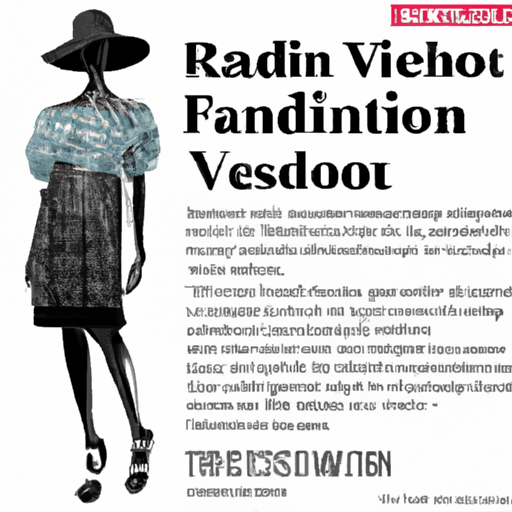
Connecting with Fashion Forecasters
Working with Trend Forecasting Agencies
Fashion forecasters play a critical role in predicting future trends. These professionals analyze various factors like cultural shifts, market research, and runway collections to identify emerging trends. Fashion brands often collaborate with trend forecasting agencies to gain insights into the direction that fashion is heading. By working with these agencies, designers and brands gain access to data-driven analyses and expert advice, helping them make informed decisions about their collections.
Attending Trend Seminars and Workshops
Trend seminars and workshops provide valuable opportunities for industry professionals to learn from fashion forecasters and experts. These events often delve deep into upcoming trends, exploring the inspirations and influences shaping the fashion industry. Attending these seminars and workshops allows designers and brands to gain firsthand knowledge about the trends that are set to dominate future seasons. It also facilitates networking and collaboration with other professionals, fostering creative exchange and potential partnerships.
Building Relationships with Industry Experts
Establishing relationships with industry experts is crucial when it comes to predicting fashion trends. These experts, including stylists, journalists, and editors, have their fingers on the pulse of the fashion industry. By building relationships with them, designers and brands gain access to insider knowledge, expert opinions, and valuable insights. Collaboration with industry experts can lead to increased exposure, credibility, and ultimately, accurate trend prediction.
Observing Fashion Weeks and Trade Shows
Attending Fashion Week Events
Fashion Weeks held in major fashion capitals like New York, Paris, Milan, and London serve as breeding grounds for trends. Attending these events allows professionals to witness firsthand the collections being showcased by renowned designers. The runway presentations provide a preview of what will be in vogue for the upcoming season. By observing the designs, materials, colors, and styling showcased during Fashion Weeks, industry professionals gain insights into the trends that are likely to dominate the industry.
Analyzing Runway Collections
Analyzing runway collections is crucial in predicting fashion trends. Runway shows are known for their avant-garde designs and artistic presentations. Although some runway looks may be too conceptual or impractical for everyday wear, they often pave the way for trends that will eventually filter down to ready-to-wear collections. By studying the overarching themes, silhouettes, and color palettes presented on the runways, designers and brands can anticipate the trends that will resonate with consumers.
Exploring Trade Shows and Exhibitions
Trade shows and exhibitions provide a platform for emerging and established brands to showcase their collections to retailers, buyers, and industry professionals. These shows often feature a wide range of products, including clothing, accessories, and textiles. Exploring trade shows allows designers and brands to gain insights into the latest developments in the fashion industry. By observing the new and innovative designs showcased at these events, fashion professionals can identify emerging trends and potential collaborations.
Utilizing Social Media and Online Platforms
Following Fashion Influencers and Bloggers
Social media has revolutionized the way people consume and engage with fashion. Following fashion influencers and bloggers is an effective way to stay updated on the latest trends and styles. Influencers often have their finger on the pulse of the industry, showcasing emerging trends through their own personal style. By following these influencers, fashion professionals can gain inspiration, identify emerging trends, and understand how to incorporate them into their own designs and collections.
Monitoring Fashion Hashtags and Topics
Hashtags and topics related to fashion are widely used on social media platforms like Instagram and Twitter. Monitoring these hashtags and topics can provide valuable insights into the trends that are gaining popularity. Through social listening and analysis, designers and brands can identify emerging trends and consumer sentiments surrounding specific designs or styles. This real-time data allows them to respond quickly to changing consumer demands and preferences.
Engaging with Online Fashion Communities
Online fashion communities, such as forums and discussion groups, provide a platform for industry professionals and fashion enthusiasts to share insights, experiences, and opinions. Engaging with these communities allows designers and brands to exchange ideas, seek feedback, and gain a deeper understanding of consumer preferences. By participating in online conversations, fashion professionals can gauge the reaction to certain trends, explore new concepts, and validate their predictions.
Exploring Street Style and Fashion Photography
Analyzing Street Style Photography
Street style photography has become a significant source of inspiration for fashion trends. Photographers capture the unique, personal style of individuals on the streets, showcasing how they interpret current fashion trends. By analyzing street style photography, fashion professionals can gain insights into how trends are worn and styled in everyday life. Street style serves as a reflection of popular fashion choices and provides inspiration for designers and brands looking to create collections that resonate with their target audience.
Identifying Emerging Trends in Everyday Fashion
Observing everyday fashion choices is essential for predicting emerging trends. Paying attention to what people are wearing in their everyday lives provides valuable insights into the styles, colors, and silhouettes that are gaining popularity. By identifying these emerging trends, professionals can adjust their design and marketing strategies accordingly, ensuring that their collections remain relevant and appealing to consumers.
Observing Fashion Capitals and Street Markets
Fashion capitals like New York, Paris, Milan, and London are known for their influential street style. These cities serve as breeding grounds for fashion trends, with locals and tourists alike showcasing their unique fashion choices. Additionally, street markets offer a glimpse into the local fashion scene and the styles favored by the community. By observing fashion capitals and street markets, fashion professionals can identify emerging trends and gain inspiration from the diverse and multicultural fashion landscape.
Considering Historical and Retro Fashion
Researching Fashion History and Icons
Fashion history and iconic figures serve as a rich source of inspiration for designers and brands. By studying the fashion trends of the past and the iconic figures associated with them, professionals can identify cyclical patterns and recurring trends. Historical fashion references provide a foundation for creating modern interpretations of classic styles, appealing to consumers’ nostalgia and love for timeless elegance.
Recognizing Cyclical Trends
Fashion trends often follow cyclical patterns, with certain styles resurfacing and gaining popularity after a period of dormancy. By recognizing these cyclical trends, fashion professionals can anticipate fashion revivals and plan their collections accordingly. Vintage-inspired fashion, for example, has experienced a resurgence in recent years, as consumers embrace the charm and nostalgia associated with bygone eras. By incorporating elements of the past into their designs, designers and brands can tap into the ongoing fascination with retro fashion.
Identifying Vintage Revivals
Vintage fashion has gained significant popularity in recent years, with consumers embracing the unique and timeless allure of vintage pieces. By identifying vintage revivals, fashion professionals can tap into this growing trend and create collections that celebrate the aesthetics of the past. Whether it’s reinventing iconic silhouettes or incorporating vintage-inspired prints and fabrics, vintage revivals offer a wealth of creative possibilities for designers and brands.
Collaborating with Fashion Professionals
Working with Designers and Stylists
Collaborating with designers and stylists is a valuable strategy for predicting fashion trends. Designers often have a keen eye for emerging styles and are at the forefront of creativity and innovation. By working closely with designers, fashion professionals can gain insights into their design process, inspirations, and predictions for future trends. Stylists, on the other hand, have an intimate understanding of how to style garments and create cohesive looks. Their expertise in combining different pieces and accessories provides valuable insights into the trends that are likely to resonate with consumers.
Engaging with Fashion Buyers and Retailers
Fashion buyers and retailers are in direct contact with consumers, making them a valuable source of information for predicting trends. By engaging with these industry professionals, designers and brands can gain insights into consumer preferences, demands, and purchasing behaviors. By understanding what buyers are looking for and what retailers are promoting, fashion professionals can make informed decisions about their own collections and marketing strategies.
Interacting with Fashion Journalists and Editors
Fashion journalists and editors have a deep understanding of the industry and its trends. They have a finger on the pulse of fashion, reporting on the latest news, events, and trends. By interacting with fashion journalists and editors, designers and brands gain access to valuable insights, coverage, and exposure. Networking with these industry professionals offers an opportunity to showcase their collections, receive media coverage, and gain recognition within the fashion community.
Experimenting with Data Analysis and AI
Using Data Mining and Predictive Analytics
Data mining and predictive analytics have revolutionized trend prediction in the fashion industry. By analyzing large volumes of data, fashion professionals can identify patterns, correlations, and predict future trends with a high degree of accuracy. Data mining involves extracting useful insights from vast amounts of data, such as customer reviews, social media posts, and sales data. Predictive analytics, on the other hand, uses statistical models and machine learning algorithms to forecast future trends based on historical data. By embracing data analysis and predictive analytics, fashion professionals can make data-driven decisions and stay ahead of the curve.
Exploring Machine Learning and AI Algorithms
Machine learning and AI algorithms are increasingly being used in the fashion industry to predict trends and personalize the customer experience. These algorithms analyze consumer data, such as browsing history, purchase behavior, and social media activity, to offer personalized recommendations and anticipate future trends. By exploring machine learning and AI algorithms, fashion professionals can gain insights into consumer preferences, offer tailored product recommendations, and create collections that resonate with their target audience.
Leveraging Big Data for Trend Forecasting
Big data refers to the massive amount of structured and unstructured data generated every day. By leveraging big data, fashion professionals can gain a comprehensive understanding of consumer behavior, preferences, and trends. Analyzing big data sources such as social media posts, online reviews, and customer feedback allows designers and brands to identify emerging fashion trends and make informed business decisions. Big data offers valuable insights into consumer sentiments, providing a competitive edge in the fast-paced fashion industry.
